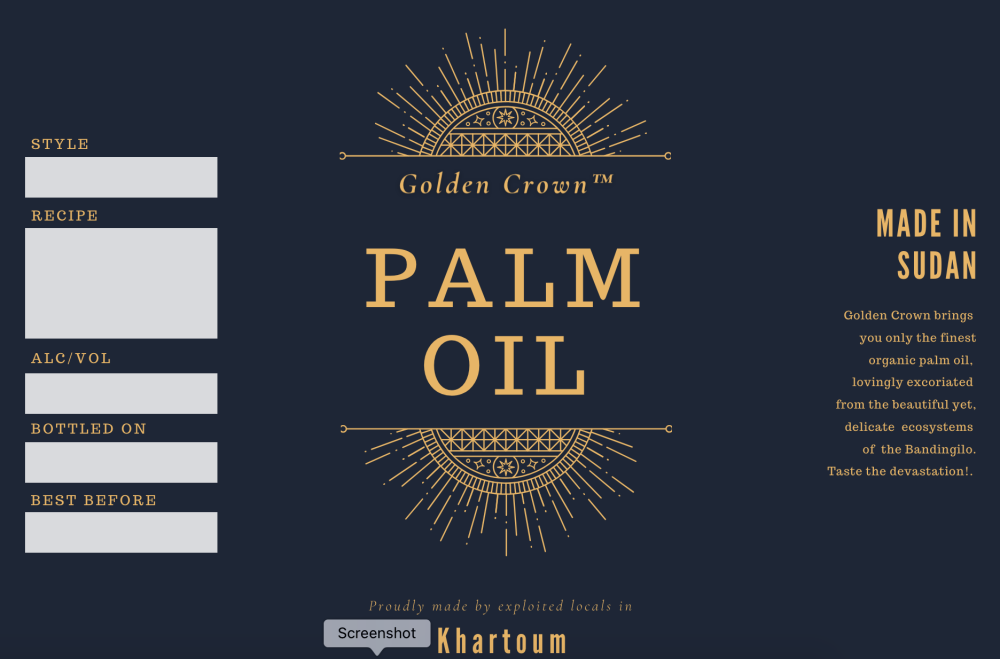Discredit derivatives
JC first published this article two years before sustainability-linked derivatives emerged on the scene. Life imitates art, once again.
|
|
Discredit derivatives were invented by swap pioneer Hunter Barkley to allow alternative investment funds and others who had lazily committed to environmental, social, and corporate governance standards in their prospectuses when that seemed like a throwaway commitment that no one would check, but that, now everyone is checking it, they manifestly cannot meet, to “brown-wash” their investment portfolios.
“It’s discredit avoidance, rather than evasion,” said Barkley.
Prehistory
The funds originally regarded ESG as a cheap way of virtue-signalling to investors, but never thought anyone other than their clients’ HR departments would care. And who cares about HR right?[1] After all, who, in her heart of hearts, really objects to massively profitable leveraged investments just because they happen to be in firearms, narcotics or financial weapons of mass destruction?
To be sure, the funds were largely right about that — no-one does care about that sort of thing in the City — but European regulators, post-Brexit, decided they did, and began holding hedge funds to account for false advertising if they claimed the sanctimony of ESG on paper without observing it in practice. Especially British ones.
Early years: single-name turpitude puts
Barkley’s idea was simple: if it was okay to extract the crappy credit profile from a portfolio of mortgages off and lay that off on someone with “sufficiently deep market expertise and advanced models to bear the risk indefinitely”[2] why not do the same thing with the unwanted ignominy of outrageous investments?
Barkley began to construct instruments — at first, simple put options — laying off the shame on those who could most easily absorb it; namely — and this was Barkley’s real genius — the very badly-run, environment-wrecking corporates that were polluting the hedge fund portfolios in the first place. The hedge fund would write an at-the-money stigma put to, for example, the Golden Crown Palm Oil Company of Sudan Pty. Ltd. (and for which it would ask little by way of premium; after all, really, what did Golden Crown care? It was ripping up the Bandingilo national park already, so what is a little more remorse?), thus getting rid of the fund’s disgrace for investing in that very company.
Objections came soon enough that this was obviously circular, but Barkley swiftly pointed out that, well, so too was debt value adjustment hedging, and everyone seemed cool with that for a good few years, didn’t they?[3] Did it present any more moral hazard than in D&O liability insurance?
Slowly, the product began to catch on. “Before you knew it, it was blazing like the Amazon jungle!” Barkley would later fondly recall.
Mature industry: discredit fault swaps
Eventually, though, people started to bridle again — I mean, could a polluter really just take its own discredit back, and thereby exonerate British hedgies of their ESG obligations for investing in it?
Barkley refined the offering by combining it with another of his innovations: cross-political currency “discredit swaps” where, for example, a natural wilderness gas fracking conglomerate could swap its embarrassment at precipitating a series of minor earthquakes on a local indigenous people, with a Dutch pornographic film distributor’s regret for generating artificial losses to gain tax relief for its celebrity investors. For example, Hackthorne Capital Advisors Master Fund III LLP[4] could lay off its porno-tax shame to Golden Crown, who had none — not being implicated in onanistic or fiscal wrongdoing as such, just environmental degradation — and Golden Crown would immediately swap out the porno discredit it had just assumed to Antwerp Fruity Motion Pictures B.V. whence it originated, and Antwerp would deliver back to Golden Crown its own environmental embarrassment, which Antwerp had acquired by selling a put to Snowy Mountain Partners LLC, another hedge fund in the same pickle as Hackthorne, only long palm oil and not smut.
In this way was the so-called “discredit fault swaps” market born.
Hope that’s all clear.
See also
References
- ↑ Younger readers may not believe it, but there was a time when people did not realise how powerful and destructive to careers, livelihoods and common sense a modern, weaponised human resources department would become.
- ↑ Yes, I know what you are thinking: a sleepy Landesbanken from Lower Saxony would be exactly such a someone, right?
- ↑ Indeed, it kept a phalanx of banks out of technical insolvency — and their DVA traders handsomely remunerated — for a good three or four years after the worst excesses of the credit crunch.
- ↑ I had seven goes on the hedge fund name generator before I came up with a fictional hedge fund name that wasn’t actually a real hedge fund name, by the way. Honestly, hedgies: what about some imagination?
